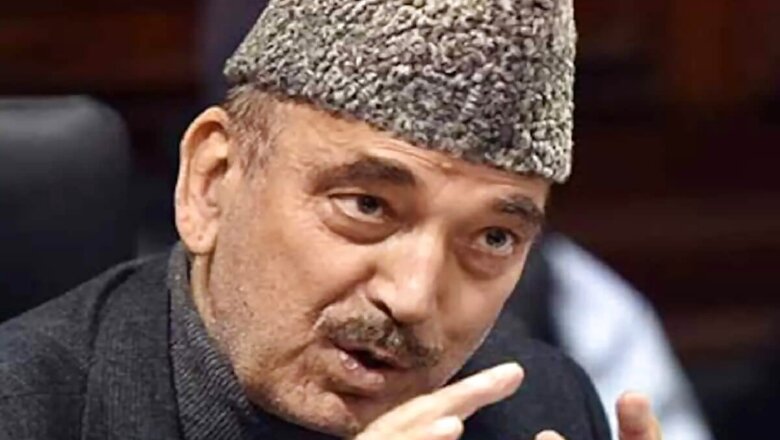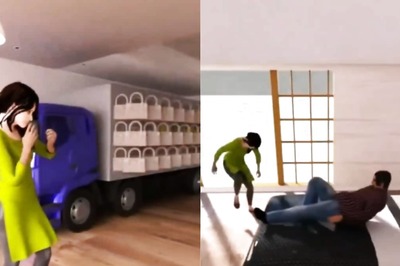
views
Noting that several countries have already secured favourable commitment for supply of a COVID-19 vaccine, Leader of Opposition in Rajya Sabha Ghulam Nabi Azad on Thursday said India should be well placed to get the vaccine at an “affordable price” and at an “early stage” through a mechanism like pooled procurement.
However, the government should be “over cautious” about the quality, safety and efficacy of a new vaccine as any long term side effects would impact India which has a large and young population, he said.
Participating in a debate on COVID-19 pandemic in the Upper House, the former health minister attacked the government for losing “golden months” to stop the spread of the disease despite a warning from the World Health Organisation (WHO) in December 2019 about the spread of a mysterious pneumonia in neighbouring China.
“It was happening in our neighbourhood, we should have been alert,” he said, adding that even former Congress President Rahul Gandhi had warned about the coming of a pandemic of this nature in March. Making suggestions to the government on procurement and post procurement strategy for last mile delivery of COVID-19 vaccine across the country, the senior Congress leader said: “We are all aware that several vaccine candidates are in advanced clinical trial phase-2 and 3 and that the vaccine will be introduced sometime in near future. It may take 3-4 months or 6-8 months, but a vaccine will come sooner or later.”
The government should closely follow the vaccine development globally as there will be very high demand for a vaccine developed anywhere in the world, he said.
“We should be well placed to get the vaccine at an affordable price and at an early stage through mechanisms such as pooled procurement….,” he said. Several nations are already in talks with frontrunners and secured favourable commitment for supply of vaccine for their population, he said, adding there is a need to have discussions and engagement with manufacturers and bilateral dialogue with countries developing the vaccine.
While procuring a new vaccine, the senior Congress leader said the government should also be aware of the fact that COVID-19 vaccine would be a new vaccine and there is a global race for developing it within a shortest time possible.
“There could be adverse or side effects, even long term effects which may need time to be identified and which have not been appropriately discovered in Phase 1, 2 and 3 trials. India needs to be cautious,” he said. “Since India is a large and young country, the government should be over cautious and should rigorously monitor the quality, safety and efficacy of the vaccine,” he noted.
On the vaccination strategy, Azad suggested the government make preparation right now on how to deliver to the last mile. The country cannot afford to lose time in preparing a vaccination strategy after the procurement of vaccines. A preparedness plan needs to be developed for deployment of future COVID-19 vaccines. For instance, identifying the priority target groups like health workers, elderly people and security personnel, he said.
Regulatory pathways, vaccine safety monitoring mechanism, communication strategy, logistics support like cold storage — all need to be put in place for last mile delivery of the vaccine, he added. The Congress leader also demanded the government to reduce the price of sanitisers and soaps by half to ensure that the poor can afford them.
That apart, the Leader of Opposition emphasised on the need to think about short, medium and long term preparedness plans in consultation with state governments.
He suggested that the government should set up a dedicated infectious disease hospital and fever clinics and not call them as COVID-19 hospitals to avoid stigma and use the term ‘physical distancing’ instead of ‘social distancing’.
Stressing on the need to enhance public health and research capacities, Azad said the government should set up four more BSL-Level 4 and BSL-Level-3 labs in each medical college in the country besides Centre for Disease Control and Health Centre for diagnostic facilities at district and community level.


















Comments
0 comment